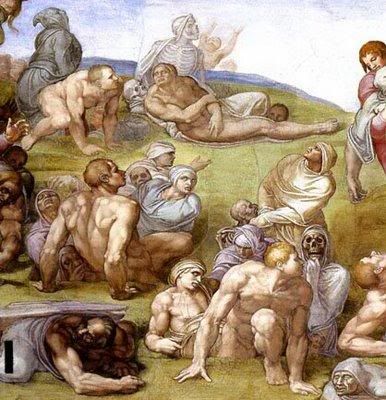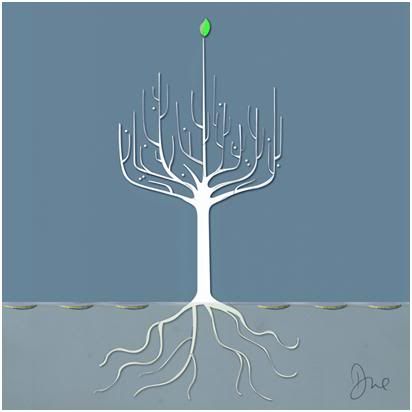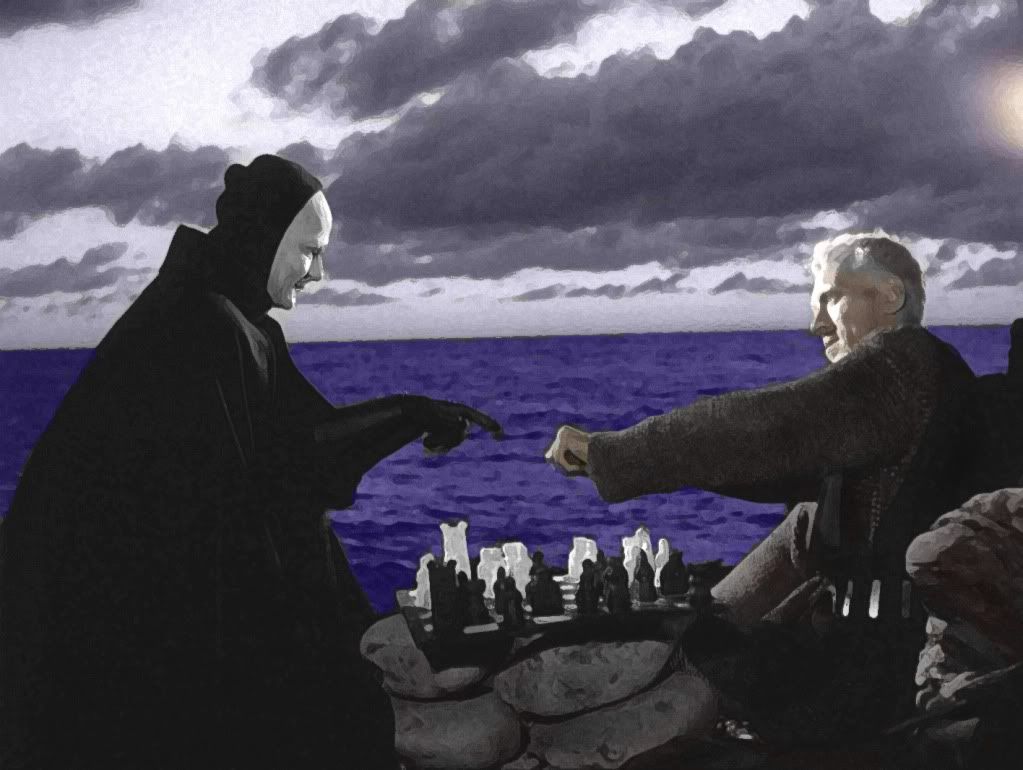When in disgrace with fortune and men’s eyes
I all alone beweep my outcast state,
And trouble deaf heaven with my bootless cries,
And look upon myself, and curse my fate,
Wishing me like to one more rich in hope,
Featured like him, like him with friends possessed,
Desiring this man’s art, and that man’s scope,
With what I most enjoy contented least;
Yet in these thoughts my self almost despising,
Haply I think on thee, and then my state,
Like to the lark at break of day arising
From sullen earth, sings hymns at heaven’s gate;
For thy sweet love remembered such wealth brings
That then I scorn to change my state with kings.
- William Shakespeare, Sonnet 29
 By Mike Darwin
By Mike Darwin
People support religion because they find it rewarding to do so for many excellent reasons. It provides a community of people with similar beliefs that validate and strengthen each other. It is specifically designed as a crisis resource – somewhere to turn when people are feeling lost, afraid, uncertain or alone. It has powerful pragmatic advantages because it provides people with in-person social networking that is frequently of use in business, child care and as a resource for practical advice and help with many of life’s troubles. Very importantly, religion serves as a source of the dissolution of or absolution from existential guilt. Just by the act of living we compromise or deprive others both of quality life, and of life itself.
It is axiomatic that by forgoing the luxuries we all enjoy we could save others from starvation and disease – and yet we do not. In our daily lives we also injure others, both knowingly and unknowingly, and these things are, to empathetic people, a source of guilt and discomfort – if not outright pain.
 Religion offers both forgiveness and concrete ways that we can address these sources of moral ennui in our lives. It is also often a source of very real material and emotional support for those who find themselves down on their luck, sick, old or dying. A good religion takes care of its own and ensures that no member of the flock is turned out on the street to die a beggar. Finally, and perhaps most importantly, religion provides a narrative for peoples’ lives – a story that allows them to make some sense out of what appears to be an otherwise senseless existence,. It doesn’t matter if the narrative is scientifically valid, or if it is especially credible as long as it provides both hope and meaning. Closely related are the promises of an afterlife, not just for the individual, but for his family and community, as well.
Religion offers both forgiveness and concrete ways that we can address these sources of moral ennui in our lives. It is also often a source of very real material and emotional support for those who find themselves down on their luck, sick, old or dying. A good religion takes care of its own and ensures that no member of the flock is turned out on the street to die a beggar. Finally, and perhaps most importantly, religion provides a narrative for peoples’ lives – a story that allows them to make some sense out of what appears to be an otherwise senseless existence,. It doesn’t matter if the narrative is scientifically valid, or if it is especially credible as long as it provides both hope and meaning. Closely related are the promises of an afterlife, not just for the individual, but for his family and community, as well.
Those are excellent reasons to be involved in a religion and to try to believe, even if you don’t. Indeed, all of the “old” religions spend a great deal of time on the subject of “struggling with belief” and an essential ingredient of a saint in Catholicism (Roman and Orthodox) is that the saint have struggled powerfully with doubt – in fact that they be wracked with it. Since sainthood is generally a singularly unrewarding thing in this life, it seems only reasonable that doubt about the wisdom of such a course of action be a material part of the experience. I would be an incredible liar if I said that I do not mock certain specifics of religions, or that I do not, as Curtis Henderson often did, remark, “How can they seriously believe that crap!” But that is not the same as holding religion in contempt, or considering it insane and useless. Religion exists because it meets many deep and abiding needs, including man’s search for meaning – his search for a narrative to make sense of it all. That desire is frequently mocked by people in cryonics and immortalism, and that is both an injustice and a mistake.
 Humans are story creatures. We can only understand our world on a daily working basis through narrative. A few of our species can use mathematics to understand the world, but even now there are no maths do not that not require some narrative to relate mathematical insights to the world we inhabit. Most of technology is a result of narrative processes, and the scientific method itself is the essence of a story, in that it has a beginning, a middle and an end: observation, experimentation, hypothesis, experimentation and theory. The scientific method is the (so far) ultimate refinement of the tool of narrative to give us a coherent, and in this case valid understanding of our world. We are also time-creatures, and the essence of a story is what happens over time. We, and the stories we tell, real or imagined, valid or invalid, are thus bound by and included in the Chronosphere.
Humans are story creatures. We can only understand our world on a daily working basis through narrative. A few of our species can use mathematics to understand the world, but even now there are no maths do not that not require some narrative to relate mathematical insights to the world we inhabit. Most of technology is a result of narrative processes, and the scientific method itself is the essence of a story, in that it has a beginning, a middle and an end: observation, experimentation, hypothesis, experimentation and theory. The scientific method is the (so far) ultimate refinement of the tool of narrative to give us a coherent, and in this case valid understanding of our world. We are also time-creatures, and the essence of a story is what happens over time. We, and the stories we tell, real or imagined, valid or invalid, are thus bound by and included in the Chronosphere.
 The thing that killed far more people in the concentration camps of Hitler, Stalin, Mao and Pol Pot than starvation was hopelessness. Strip away hope and you will soon end life. Emily Dickinson may have been right when she said, “Hope is the thing with feathers that perches in the soul…” However, she was certainly wrong when she went on to say, “Yet, never, in extremity, It asked a crumb of me.” Hope requires lots of feeding and is does best when it is raised up on a diet of rational, responsible caring. Hope must be credible and its manifestations must be real and apparent. People seek meaning and succor in religion because they can both see and personally experience its benefits – not just in a promised afterlife, but here and now. One reason for the failure of cryonics organizations is that they are as cold and unfeeling as the stainless steel dewars and liquid nitrogen they employ in the only visible manifestation of their temporal work. Yes, there is some comfort in that, but you don’t even get to touch it until you’re “dead.”
The thing that killed far more people in the concentration camps of Hitler, Stalin, Mao and Pol Pot than starvation was hopelessness. Strip away hope and you will soon end life. Emily Dickinson may have been right when she said, “Hope is the thing with feathers that perches in the soul…” However, she was certainly wrong when she went on to say, “Yet, never, in extremity, It asked a crumb of me.” Hope requires lots of feeding and is does best when it is raised up on a diet of rational, responsible caring. Hope must be credible and its manifestations must be real and apparent. People seek meaning and succor in religion because they can both see and personally experience its benefits – not just in a promised afterlife, but here and now. One reason for the failure of cryonics organizations is that they are as cold and unfeeling as the stainless steel dewars and liquid nitrogen they employ in the only visible manifestation of their temporal work. Yes, there is some comfort in that, but you don’t even get to touch it until you’re “dead.”
 While you are alive what you get from them is bills and yet more requests for money. You get a newsletter which is about as involved and caring for the narrative of your life, and your experience of it, as is an issue of Scientific American or Wired. In fact, it might be argued that those publications are more concerned with your interest and enjoyment of what is to come, because their articles involve you in the putative futures they discuss, if in no other way than asking questions and giving answers with the words “we” and “you” in them. “Will we discover that there are indeed countless universes…” or “So, someday you may well pull up to the pump and instead of filling your car with petrol, you’ll recharge your recharge your tank, which contains a matrix of complex metal hydride, with hydrogen…”
While you are alive what you get from them is bills and yet more requests for money. You get a newsletter which is about as involved and caring for the narrative of your life, and your experience of it, as is an issue of Scientific American or Wired. In fact, it might be argued that those publications are more concerned with your interest and enjoyment of what is to come, because their articles involve you in the putative futures they discuss, if in no other way than asking questions and giving answers with the words “we” and “you” in them. “Will we discover that there are indeed countless universes…” or “So, someday you may well pull up to the pump and instead of filling your car with petrol, you’ll recharge your recharge your tank, which contains a matrix of complex metal hydride, with hydrogen…”
To take and take and take and not to care, not to really care (or to be able to show it) can in no way compete with what is available at any Kiwanis Club, Moose Lodge, Temple or Church. To leave people without a narrative, without a community, without a sense of overarching purpose and without even the hint of charity, should they be in need, is not a recipe for success.
Cryonics, and indefinitely extended life in youthful good health, which it implies, is a powerful and profoundly good idea which will revolutionize the world and prepare us to spread to other worlds. That is a potent message that is both inspired and inspiring and for which men will lay down their nets (and webs) and go forth and work to make it a reality. But they cannot do that absent the narrative, and they cannot do that absent the community, and they most certainly cannot do that absent both leadership and support. Cryonics will continue to grow slowly, often in ways detrimental to its survival and it will remain weak and divided until, at some point in the interesting times ahead, it comes to the attention of important people. At that point its narrative will be over, and the ending will have been written not by us, but by our enemies – the enemies of life itself.


a great short essay by one of the best political writers around, the recently deceased Joe Bageant, addresses the conflict between the reasoning faculties of atheists and man’s innate need for religion:
http://www.joebageant.com/joe/2005/03/finding_jesus_a.html
A realistic appraisal indeed, spot on. Probably a bit of the solution I’ve been looking for within cryonics would be the development of community. I appreciate how your post focuses on the positives of religion, without discounting the good they do purely on the account of any opposing beliefs the various religions may have. I don’t feel it is useful or effective to argue with someone that what they believe is silly or untrue, it works much better to focus on the similarities in thinking and how you and they can benefit each other or your community.
I was surprised to pick up an Elle magazine the other day and see an article on ending aging http://www.tasciences.com/pdf/elle_ta.pdf . I’m sure that article would cause more than a few to start researching various people and ideas mentioned within the article. I always assume a few of those yet, will end up reading about cryonics. Sadly, cryonics gets discounted as being selfish and nothing is seen as being given back to the community-now or in the future. I tried to make a point that there are benefits to cryonics in the petition I created: http://www.thepetitionsite.com/2/preserve-the-right-of-those-who-are-dying-to-choose-cryonics/ Really though, anyone who wants to try cryonics and signs up, does not have the normal human support system that other organizations such as religions have (nor do cryonics organizations make you feel you are giving back to your community and are part of a greater good). As a cryonicist, I feel that way–that cryonics is a noble experiment and beneficial for science now as well as the benefits that cryonicists from now could give in a future society.
<>
In addition to cryonics:
We could have prepared ourselves better to spread to other worlds by further developing the Russian Space Shuttle and its associated delivery rockets. The Russian/Soviet space shuttle ‘s development took place a number of years after
the development of the American Space Shuttle. The Russian’s learnt a lot from
the Americans and it is believed that they made a better space shuttle as a result of what they learnt from the Americans & their own skills/cababilities. The Russian space shuttle made a three orbit flight around the Earth in the late 1980s. The flight was unmanned. The Russian space shuttle was suppose to have better thermal tile insulation protection. The Russian space shuttle had/has gas turbine engines. Thus after it enters the atmosphere, it is a plane rather than a glider for its return to earth. The delivery rockets only use liquid fuels. These are suppose to be much safer than solid fuels – remember the American space shuttle system uses two solid fuel rockets The Russian delivery rocket system was to be further developed so that it could be completely reusable and also return to earth and land at an airport. The Russian delivery rocket system could be used as an important part of a manned mission to Mars. Here – I know there are very big problems landing people on Mars from Martian orbit – It is better to have no atmosphere like the Moon or a relatively
thick atmosphere like the Earth. Mars thin atmosphere is a real problem – but lets worry about that later. As well as making cryonics stronger, we really need to bring back the Russian space shuttle. At least I think.
In addition to the above, I would also like to say something else.
I think that the task associated with bringing the Russian space shuttle back is mainly an Engineering task. People always seem to talk about Science and Technology. While I am strongly in favour of Science and Technology, I think that Engineering should be put on an equal footing with Science and Technology.